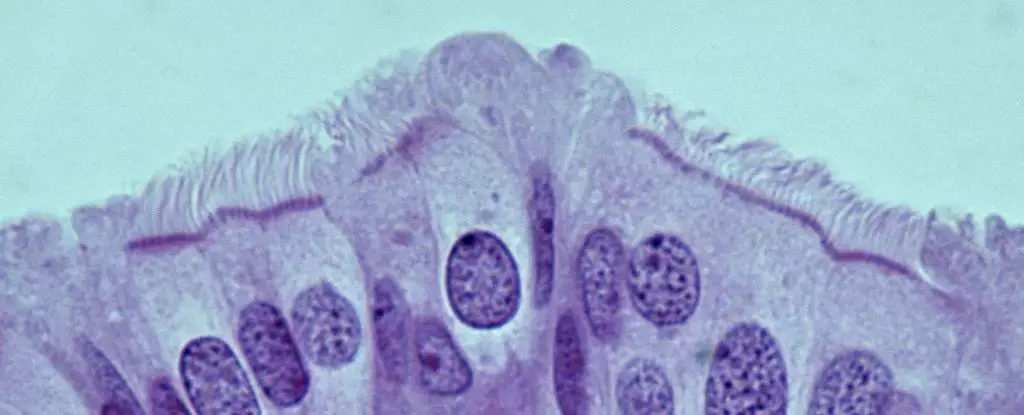Recent research has taken a significant step forward in understanding the most prevalent and aggressive form of ovarian cancer. Conducted by a team of scientists working with mouse models, this study focuses on identifying specific cells in the oviducts that may be responsible for high-grade serous ovarian carcinoma (HGSOC). This type of cancer is notoriously lethal, with many patients facing dire prognoses—often succumbing within five years of diagnosis. As researchers delve into the mechanisms of this disease, the hope is that their findings will facilitate earlier detection and treatment, potentially saving countless lives.
For over a decade, studies have suggested a striking paradigm shift: rather than originating in the ovaries, many ovarian cancers may actually develop in the fallopian tubes. This insight has driven researchers to investigate the lesions found at the ends of these tubes, which appear genetically linked to ovarian tumors. Despite these advances, the precise cell types implicated in HGSOC within the fallopian tubes have remained elusive.
One of the critical challenges in managing HGSOC is its often-asymptomatic presentation. When symptoms do arise, the disease is generally in an advanced stage—estimated at around 80 percent of cases at diagnosis. By this point, treatment options are severely limited, contributing to the poor outcomes seen in affected individuals. According to researchers led by Cornell University pathologist Alexander Nikitin, a deeper understanding of early cellular changes is vital. “Detection and treatment of HGSOC at earlier stages could be crucial to improving the prognosis of patients with this malignancy,” Nikitin stated. However, the current gap in knowledge regarding the origins of HGSOC hampers the development of effective diagnostic markers and treatment strategies.
Despite previous studies identifying ovarian stem cells that may lead to HGSOC, the recent investigation represents the pioneering effort in identifying cancer-prone cells specifically within the oviduct. This exploration into the cellular landscape of the mouse oviduct marks a significant milestone in the field of oncology.
In a groundbreaking revelation, the research team pinpointed that the most vulnerable cells to oncogenic transformation within the mouse oviduct are not stem cells—but rather, pre-ciliated cells. These transitional cells are in the process of maturing into ciliated cells, which play a key role in moving oocytes (egg cells) through the reproductive tract. This distinction highlights a crucial nuance in the biology of HGSOC, as it suggests that cancer does not solely arise from stem cell activity but could also be critically influenced by the differentiation processes of these pre-ciliated cells.
The researchers identified two specific genetic mutations associated with HGSOC that adversely affect the normal function of these pre-ciliated cells, promoting cancer development. This connection between cilia formation regulation in the uterine tubes and ovarian cancer presents an intriguing avenue for future research, particularly in exploring how disruptions in cellular functions can lead to malignancy.
Interestingly, the connection between ciliogenesis and other forms of cancer, such as pancreatic cancer, opens up vast possibilities for comparative studies that may enhance our understanding of various malignancies. Identifying the cells linked to the onset of these conditions may lay the groundwork for developing targeted therapies and early detection strategies.
The journey does not end with this study. The next steps involve rigorous exploration of the mechanisms behind ovarian tumor formation and assessing the impacts of other genetic mutations associated with HGSOC. By unraveling the complexities of these cellular changes, researchers aim to design interventions that can intervene earlier in the cancer trajectory, significantly improving patient outcomes.
This notable research underlines the importance of continuous exploration in the fight against ovarian cancer. By shifting the spotlight from the ovaries to the oviducts and recognizing the significance of pre-ciliated cells, scientists may enhance early diagnosis capabilities, ultimately translating into improved prognoses for patients battling high-grade serous ovarian carcinoma.

Leave a Reply